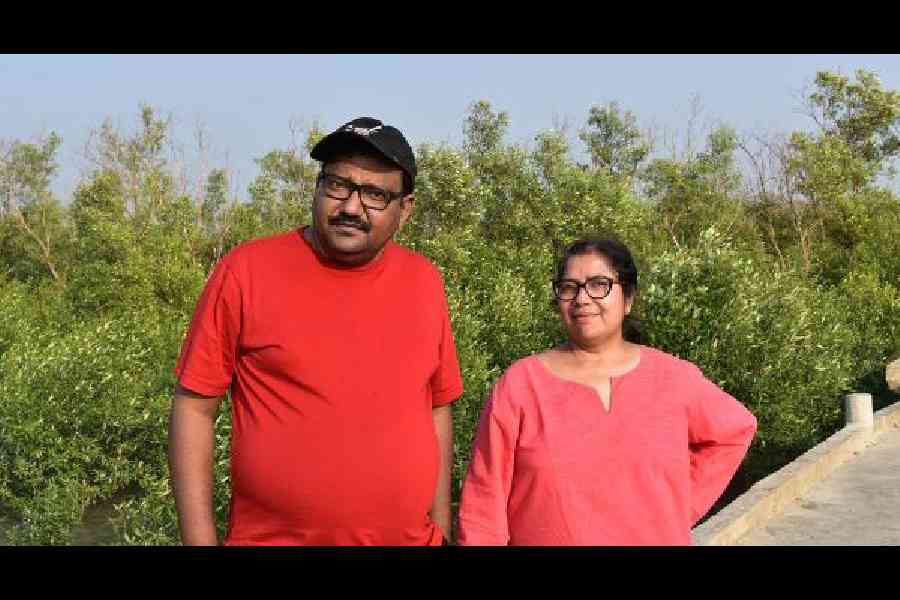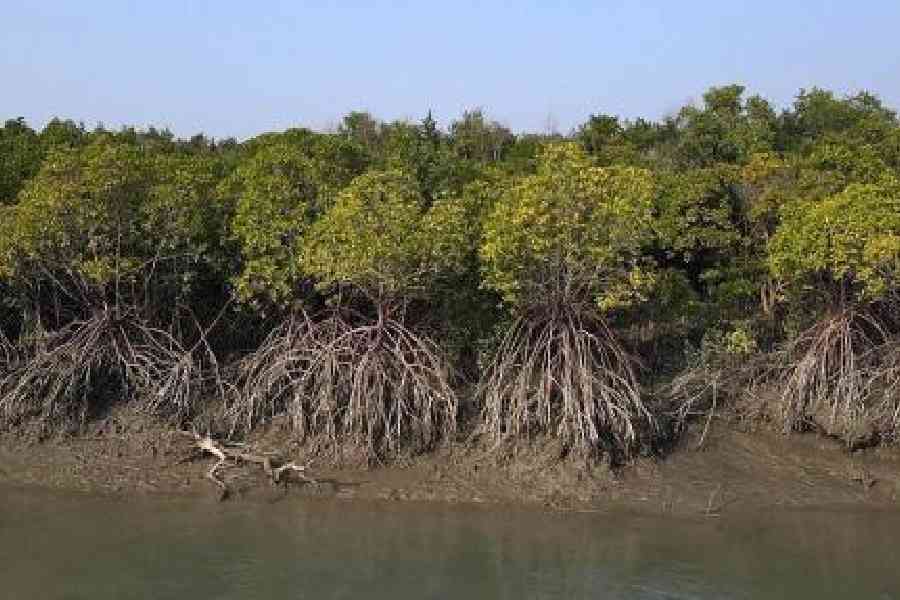The Sundarbans are known to derive the name from Sundari, the mangrove species of trees that grows there; but the plant itself is now classified as endangered.
For the past 10 years, a botanist couple from AB Block has been leading a project to restore parts of this vital mangrove forest. Their research article on their findings was published in the Scientific Reports journal of Springer Nature, which is a German-British publication company and in a happy coincidence, it was published on World Environment Day.
“This project is funded and monitored by the central government’s department of biotechnology and the state department of forests is the collaborator. We began a five-year pilot project in 2014 and reapplied after it’s success. We are now working on about 65 hectares there,” says Krishna Roy, associate professor of botany at West Bengal State University, who is principal investigator in the project. Her husband Sandip Kumar Basak is co-investigator. He is also principal of Sarat Centenary College.
Here’s what The Telegraph Salt Lake learnt from them-
Why we need the Sundarbans
l Storing carbon- Carbon sequestration is the process of capturing and storing carbon dioxide, a harmful greenhouse gas. This happens through photosynthesis, and in mangroves, this happens all the more effectively as their extensive root system traps dead leaves, twigs etc, and acts as an underwater vault, safely storing carbon away from the atmosphere. If this carbon gets released back into the air, it will accelerate climate change.
l Cyclone shield- Mangroves act as a natural cyclone shield for coasts. The dense trees weaken the incoming winds and complex root systems prevent soil erosion. The mangroves act as a buffer zone. Calcutta is about 100km from the Sundarbans and if it wasn’t for the mangroves, the city would be flattened in super cyclones like Amphan.
l Eco system servicing- the mangroves are the habitat for many fish, animals, zoo plankton, Irrawaddy dolphin, bees etc. Prawns, fish, snakes like to breed in the root network in the mangrove. End of the mangroves will endanger all of them.
What’s the threat?
To survive, mangroves need optimum temperature, salinity, pH level, and dissolved oxygen level. It also needs the play of tides. But this is all at risk now.
l Land use change- local settlements cut down mangroves to create fisheries. These are made closest to the land and are made of mud walls (aal). But they use harmful pesticides to maximise fish production, polluting the water and soil. The water needs to be changed frequently and once production reduces, they abandon this space. But by then this water and land are polluted, making it difficult for mangroves to return.
The Bangladesh side of the Sundarbans is not as inhabited by people like ours and so their mangroves are way taller and healthier. The salinity of the water there is between one and two (ideally it should be less than one) while on the Indian side, it is 30-40 ds/m.
l Rising sea levels- As glaciers melt, they add more water to the oceans, causing the water level to rise. This is inundating low-lying areas where mangroves grow. The mangroves cannot survive in constantly submerged waters.
Reclaim attempt
“After the Aila cyclone of 2009, the government cemented the edges of the islands there to protect them from future storms. But that’s not enough,” said Roy. “The first shield needs to be the mangroves, followed by the concrete barriers. These are the areas the team is working on.”
Traditional afforestation involves planting trees at a fixed distance from one other and planting only one kind of tree. But this group has taken a different approach.

Krishna Roy and Sandip Kumar Basak Sundarbans restoration project
“We began by planting grass that helps bind the soil and acts as a natural trap for mangrove propagules (seedlings) dispersed by water currents. We then focused on planting a diverse range of mangrove species, including 30-35 species of true mangroves and associate species that naturally occur alongside them,” she said. The trees were planted closely together, mimicking a natural mangrove forest.
The areas closest, midway, and far from the land experience different levels of tidal activity, so the water’s salinity differs. Each is suitable for different groups of plants. “The Sundari tree, for instance, thrives closest to the land but this species has nearly vanished from the Indian Sundarbans. We are struggling to reintroduce it,” Basak says.
“We are involving local communities in the restoration work as it fosters a sense of responsibility in protecting the mangroves. It will hopefully prevent them from releasing their goats in these areas to graze and eat up saplings,” says Roy. “These residents have been the worst hit by the cyclones and now realise how the mangroves alone can protect them.”
What can city folk do?
Mangroves won’t grow in the city but you can plant regular trees. Isn’t the heat unbearable nowadays? If you have a lot of trees, they would absorb carbon and mitigate climate change.
“But ensure to plant tall trees. Urban planners plant small shrubs to tick a box, knowing they can easily remove them if construction is needed,” says Basak. “Had they planted tall trees, it would be difficult to get permission to fell them.”
